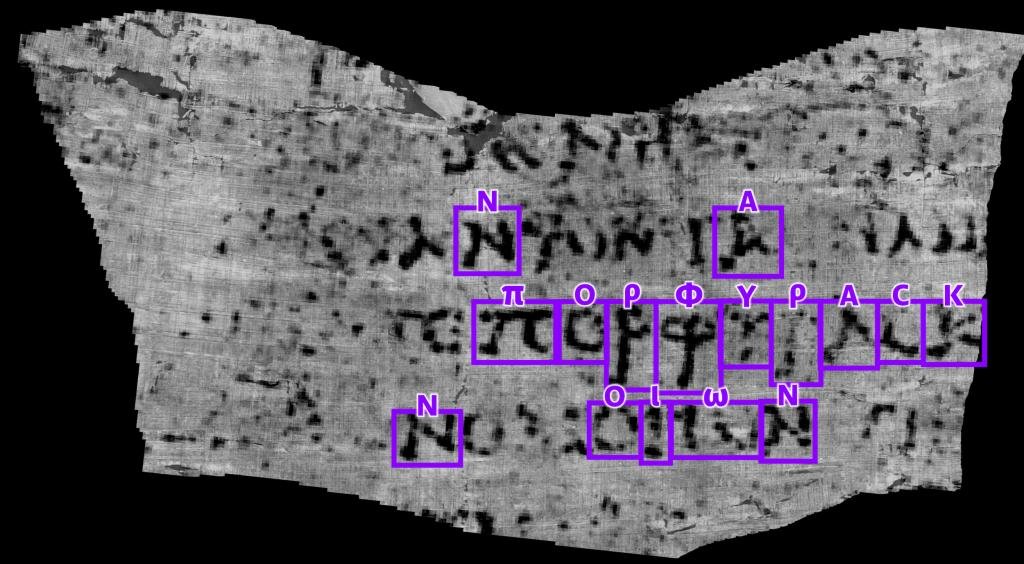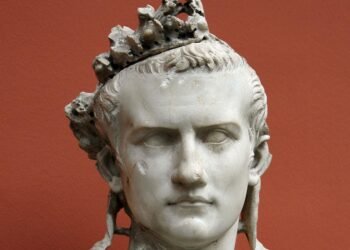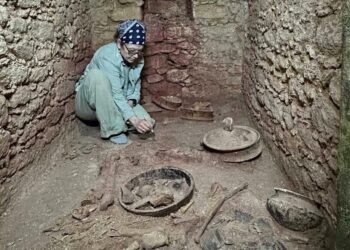A 21-year-old computer science student, Luke Farritor from the University of Nebraska-Lincoln, has emerged victorious in the Vesuvius Challenge, unlocking the mysteries of the ancient Herculaneum scrolls.

These scrolls, carbonized during the eruption of Mount Vesuvius in 79 CE, have long eluded scholars due to their fragility, but recent advancements in artificial intelligence (AI) are bringing them to light.
The Herculaneum scrolls, discovered in the 1700s in a grand villa believed to have belonged to Julius Caesar’s father-in-law, have been a tantalizing enigma. Traditionally too delicate to unwrap, the scrolls have presented a unique challenge to researchers seeking to decipher lost ancient texts.
However, the Vesuvius Challenge, backed by Silicon Valley funding and led by Brent Seales, a computer scientist from the University of Kentucky, is revolutionizing our understanding of this unique historical artifact.

The breakthrough came as Farritor successfully deciphered the first word from the scrolls, a monumental achievement in the quest to unveil the secrets of this intact ancient library. The word, “porphyras,” an ancient Greek term for “purple,” was identified using a machine learning algorithm developed by Farritor. This discovery has not only earned him a reward of $40,000 but has also opened the door to decoding the remaining 800 scrolls.
The Vesuvius Challenge, launched earlier this year, invited participants to employ AI and machine learning to unravel the scrolls without physically touching them. The use of 3D X-ray images, provided by Seales and his team, allowed contestants to navigate the challenging task of deciphering texts that have remained unreadable for over two millennia.
This breakthrough builds upon Seales’ previous success in using CT scans to virtually unwrap and read ancient scrolls, such as the En-Gedi Scroll in 2016. The unique challenge posed by the Herculaneum scrolls, with their carbonized state and charcoal ink, necessitated creative approaches. The AI-driven Vesuvius Challenge harnessed the collective power of over 1,500 research teams, fostering collaboration and innovation.
Farritor’s algorithm focused on subtle surface textures, known as ‘crackle,’ identified in the scans by another contestant, Casey Handmer. The crackle pattern was indicative of ink, leading Farritor to train his machine learning model to recognize and decipher the letters. The result was the revelation of the word “porphyras” and a significant leap forward in the deciphering process.
The discovery is not only a triumph for Farritor but also for classical scholarship. Federica Nicolardi, a papyrologist at the University of Naples Federico II, expressed excitement about the potential impact on our understanding of the ancient world. She emphasized that the preserved texts from the Library of Herculaneum are entirely unknown from other sources, offering the possibility of expanding the ancient canon.
Seales, reflecting on the collaborative effort, stated, “The Vesuvius challenge allowed us to enlist more than a thousand research teams to work on a problem that would normally have about five people working on it.” The ongoing challenge carries a grand prize of $700,000 for identifying four separate passages of at least 140 characters, motivating researchers worldwide to contribute to this groundbreaking endeavor.
Seales envisions that machine learning could unlock the “invisible library,” including texts in medieval book bindings, palimpsests, and ancient Egyptian mummy cases. Farritor, having already run his models on other segments of the scroll, anticipates the unveiling of many more characters in the quest to decipher the ancient library.
























I bet the Vatican is going to try to buy them in hope of keeping their narrative
What? What does this have to do with the Vatican?
He probably just got them confused with the Dead Sea Scrolls.
oh yes, the word “purple” would be disastrous for the Vatican’s narrative! (but seriously, what do you think Vatican’s narrative is? And why would these particular scrolls destroy it, while many, many others they did not only not hide, but helped conserve and propagate, did not?)
I do believe you are referring to the Vatican locking up texts that go against their teachings of the bible. I have seen so many documentaries about that. If this is one of those, they probably would.
Methinks Jesse has been at the vat again!
I mean if you’ve got the CAT scans you don’t need AI to do this. Really, you don’t.
Getting everyone to agree on what they mean, you probably do though. Got anymore of these scans? Thinking of deciphering them (without AI) just to satisfy my curiosity.
Your average pedantic commenter lmao if it is so easy how come this 21yo made 40k instead of you?
Unnecessary comment and snarky, too!
The AI is necessary because the scrolls are rolled documents so the imaging has words on top of other words and can’t differentiate what layer of the scroll each letter was in and gives the appearance of multiple letters all stacked on top of each other. The AI is able to isolate the shapes of the letters and determine the words based on neighboring letters. Then, the predictive text is able to use the neighboring words to determine a most likely word order. An algorithm is necessary because an individual couldn’t possibly assess so many possibilities at once. Additionally, the ink isn’t visible after the scan. It looks like black on black. There’s a chemical analysis to isolate the ink as well. There’s too much going on there for a person or even a team to be able to decipher something like that with any level of accuracy or precision. Opinions would differ on every point because it’s a sensory thing.
Con’t: Sorry not chemical analysis. More like spectroscopy. I don’t know the details, but the ink and paper are not distinguishable from each other by the naked eye. The distinction between them has to be done in a manner that doesn’t involve sampling. The wavelengths have to be charted or something. Basically, my understanding is that it can’t even be seen with eyes so a person couldn’t even start to try deciphering anything with the CT scan imaging alone.
I just decipher the next word on the scroll to be “Rain”
Like it…very advanced these Romans
I agree with you it says purple rain, now there is 2 in agreement therefore it must be true better ask them where your $40,000 are for word number 2.